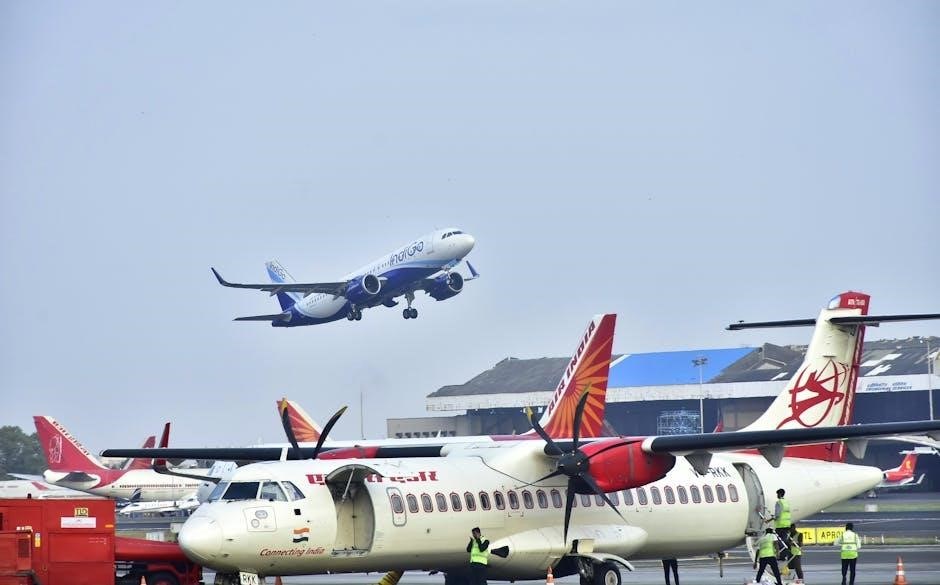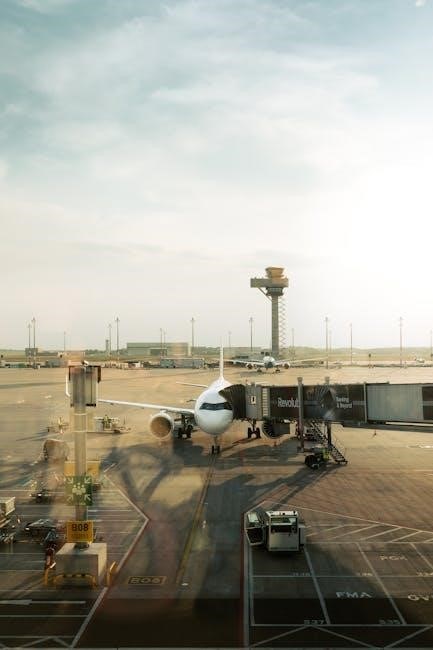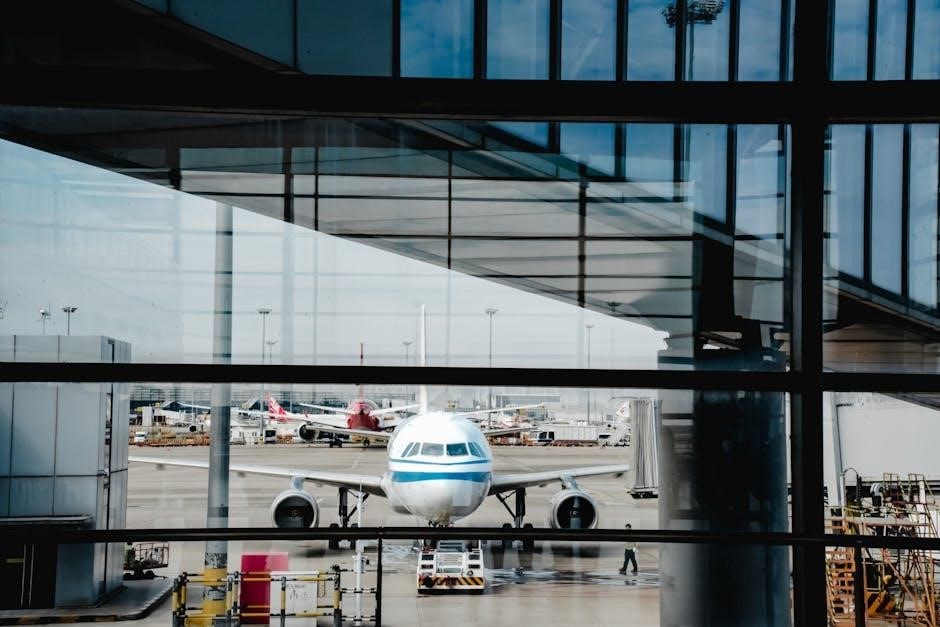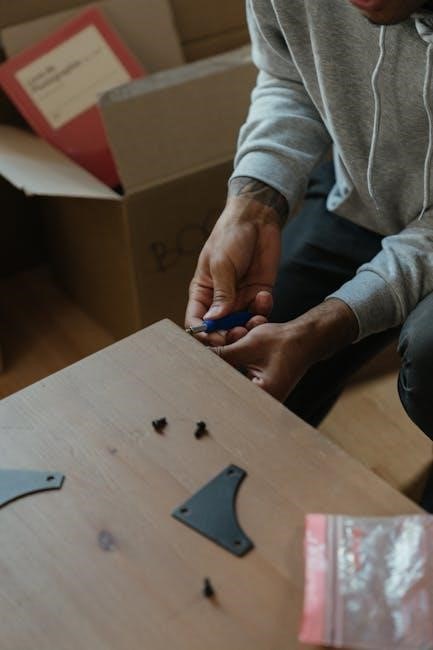Foam board RC plane plans are popular for their durability, cost-effectiveness, and ease of use, offering accessible PDF designs for creative and functional model aircraft builds.
What Are Foam Board RC Planes?
Foam board RC planes are lightweight,remote-controlled model aircraft constructed from foam board material. Known for their durability and ease of use, they are popular among hobbyists and beginners. The foam board is easy to cut and shape, making it ideal for custom designs. These planes are cost-effective and versatile, suitable for both recreational flying and complex projects, offering a fun and accessible way to enjoy RC aviation.
Why Use Foam Board for RC Planes?
Foam board is a popular choice for RC planes due to its exceptional durability, crash resistance, and ease of shaping. It absorbs minor impacts without breaking, making it ideal for beginners and practice flights. Additionally, foam board is cost-effective and requires no specialized tools for cutting or shaping, allowing hobbyists to create custom designs efficiently. Its lightweight nature also enhances flight performance, making it a versatile material for both simple and complex RC aircraft projects.
Benefits of Foam Board RC Planes
Foam board RC planes offer durability, crash resistance, and cost-effectiveness. They are lightweight, easy to cut, and shape without specialized tools, making them ideal for hobbyists and beginners.
Durability and Crash Resistance
Foam board RC planes are remarkably durable and resistant to crashes. The dense yet lightweight material absorbs impacts effectively, reducing damage from hard landings or collisions. This makes them ideal for beginners, as they can withstand minor mishaps without significant harm. The flexibility of foam board also helps maintain structural integrity, ensuring the plane remains flyable even after a few bumps. This resilience makes foam board planes a practical choice for hobbyists seeking longevity and reliability in their models.
Cost-Effectiveness
Foam board RC planes are highly cost-effective, making them an excellent choice for hobbyists. The materials are inexpensive and widely available, reducing the overall cost of building a plane. Compared to traditional balsa wood or carbon fiber models, foam board planes require minimal investment while offering great performance. This affordability allows enthusiasts to experiment and build multiple designs without significant financial strain, making the hobby accessible to a broader audience.

Easy to Cut and Shape
Foam board is incredibly easy to cut and shape, making it ideal for RC plane construction. Its soft, dense texture allows for smooth cuts with basic tools like hobby knives or scissors. This simplicity enables quick modifications and precise shaping of wings, fuselages, and control surfaces. The ease of shaping ensures that even complex designs can be achieved without advanced tools, making foam board a versatile material for both beginners and experienced builders.
Materials and Tools Needed
Foam board sheets, glue, scissors, hobby knives, rulers, sandpaper, and craft cutters are essential. Basic tools like hot wire cutters and utility knives aid precise shaping.
Essential Materials for Foam Board RC Planes
Foam board sheets are the primary material, available in various thicknesses. Other essentials include glue, scissors, hobby knives, rulers, sandpaper, and weights for flattening. Hot wire cutters are optional but useful for precise cuts. Safety gear like gloves and goggles is recommended. Adhesives such as hot glue or epoxy may be needed for added strength. These materials are foundational for constructing the airframe of your RC plane.
Tools Required for Cutting and Shaping
Building foam board RC planes requires specific tools for precise cutting and shaping. Essential tools include a hobby knife or X-Acto knife for detailed cuts, scissors for straight edges, a ruler or straightedge for accuracy, sandpaper for smoothing, and a cutting mat for protection. Additionally, a pencil or marker is needed to trace plans, a hot wire cutter for thicker foam, tweezers for small adjustments, clamps for stability, and safety gear like gloves and goggles for protection.
Design Considerations for Foam Board Planes
Design considerations for foam board planes include aerodynamics and balance for optimal flight performance, ensuring lightweight construction while maintaining structural integrity for durability and stability and control;
Understanding Wing Configuration
Wing configuration significantly impacts flight performance. A rectangular wing offers stability, while tapered or elliptical designs improve aerodynamic efficiency. The dihedral angle enhances roll stability, and wing camber increases lift. Proper alignment and symmetry are crucial for balanced flight. Choosing the right configuration depends on the plane’s intended use, such as speed, agility, or endurance. Ensure the wing design aligns with your skill level and performance expectations for optimal results.
Importance of Weight Distribution
Weight distribution is critical for stable and controlled flight. A well-balanced plane ensures even lift and prevents excessive nose-heavy or tail-heavy tendencies. Proper distribution minimizes the risk of stalling and improves maneuverability. Incorrect weight distribution can lead to poor performance or even loss of control. Always ensure the center of gravity aligns with the recommended specifications. This balance is key for smooth takeoffs, landings, and responsive handling during flight.

Popular Foam Board RC Plane Plans
Flite Test Flyer and Simple Cub are among the most popular plans, offering easy builds and stable flights for beginners and experienced pilots alike.
Flite Test Flyer Plan
The Flite Test Flyer is a popular and versatile foam board RC plane design, known for its simplicity and durability. It features a stable flight performance, making it ideal for beginners. The plan is widely available as a downloadable PDF, offering clear instructions for cutting and assembling the airframe. Its compact size and lightweight construction allow for smooth handling, both indoors and outdoors. This design is highly recommended for those new to RC flying, as it is forgiving and easy to repair.
Simple Cub Plan
The Simple Cub is a classic foam board RC plane design, favored for its stability and ease of assembly. Designed for beginners, it offers a gentle learning curve with predictable flight behavior. The PDF plan provides detailed templates for precise cutting, ensuring a sturdy yet lightweight airframe. Its large wingspan enhances lift, making it suitable for calm weather flying. This design is perfect for hobbyists seeking a reliable and forgiving trainer aircraft to hone their piloting skills.

How to Download and Print Plans
Visit reputable websites like FliteTest or RC forums to download foam board RC plane PDF plans. Use standard printer settings, ensuring plans print at actual size for accuracy.
Where to Find Reliable PDF Plans Online
Reliable foam board RC plane PDF plans can be found on websites like FliteTest, RC Groups, and Thingiverse. These platforms offer a wide variety of designs, from simple trainers to complex aerobatic planes. Many plans are shared by experienced builders, ensuring quality and flightworthiness. Look for plans with clear instructions and diagrams to ensure a smooth building process. Always verify the source and read reviews to avoid low-quality or incomplete files.
Printer Settings for Printing Plans
For printing foam board RC plane plans, use a high-resolution printer setting, ideally 300 DPI, to ensure clarity. Select standard paper sizes like A4 or Letter to match the plan dimensions. Avoid scaling adjustments to maintain accuracy. Choose “Actual Size” in print settings and ensure the paper type is set to 80-100 gsm for optimal results. Check the preview to confirm the plan fits the page, and ensure the printer is aligned to prevent blurry text or images.

Safety Tips for Building and Flying
Always wear protective gear when handling power tools and flying. Ensure proper battery handling and avoid overcharging. Conduct pre-flight checks to verify all systems are functioning correctly, and inspect for loose parts or damage. Maintain a safe distance from people and obstacles during flights. Never fly near airports or in restricted airspace. Keep emergency equipment nearby and follow local aviation regulations strictly.
Handling Power Systems Safely
When working with power systems, ensure batteries are disconnected during assembly and adjustments. Avoid overcharging or using damaged batteries, as they can catch fire. Keep a fire extinguisher or LiPo safety bag nearby. Handle motors and ESCs with care to prevent electrical shorts. Secure all electrical components firmly to prevent vibration-related failures during flight. Always test power systems at low throttle initially to check for proper function and connectivity.
Pre-Flight Checks
Before flying, inspect the plane for damage or loose parts. Ensure all control surfaces move freely and respond correctly. Verify battery voltage and secure connections. Check the center of gravity and balance. Confirm proper motor and ESC function. Inspect the propeller for damage. Ensure the radio system is calibrated and free of interference. Perform a range check and ensure all safety features are enabled. Always check weather conditions and choose a safe, open flying area.

Step-by-Step Building Guide
Foam board RC plane plans provide detailed instructions for cutting, assembling, and configuring the aircraft. Follow the template carefully, ensuring accurate cuts and secure connections for a sturdy build.
Cutting Out the Airframe
Begin by tracing the PDF plan onto the foam board using a marker. Use a sharp utility knife to carefully cut out the airframe, following the lines precisely. Score deeper cuts gradually to avoid breaking the material. Sand rough edges for smoothness and ensure all pieces fit together as per the template. Always cut on a stable surface for accuracy and safety.
Assembling the Plane
Align the pre-cut foam board pieces according to the plan. Use a ruler and marker to ensure accurate placement. Apply glue carefully, starting with the fuselage and wings, then attaching the tail section. Use clips or weights to hold pieces in place while the glue dries. Double-check alignment frequently to avoid misplacement. Allow the glue to dry completely before handling the plane to ensure structural integrity and proper bonding.

Electronics Installation
Install the motor, ESC, and receiver in designated areas. Secure components with glue or tape. Connect wires neatly, ensuring proper soldering. Mount the battery safely.
Choosing the Right Motor and ESC
Selecting the appropriate motor and ESC is crucial for optimal performance. Consider the plane’s size, weight, and desired speed. A brushless motor is recommended for efficiency and durability. Ensure the ESC matches the motor’s power requirements and battery voltage. Choose a motor with sufficient thrust to weight ratio, typically 1:1 or higher. Pairing the right components ensures reliable operation and extends the plane’s flight capabilities.
Setting Up the Radio Control System
Setting up the radio control system involves binding the transmitter and receiver, ensuring proper channel assignments. Install the receiver in a dry, secure location within the plane. Connect the servos to the receiver’s corresponding channels and test all controls. Calibrate the system to ensure smooth, precise movements. Verify that all components are interference-free and functioning correctly before the first flight. Always follow the manufacturer’s instructions for optimal performance.
Center of Gravity (CG) Setup
Proper CG ensures stable flight by balancing the plane’s weight. Locate the CG along the wing chord, typically near the thickest part. Adjust by moving the battery or adding weights to achieve optimal balance. Always test and verify CG before flight to ensure smooth, predictable performance. Correct CG prevents stalls and improves maneuverability.
Why CG is Critical for Flight Performance
Proper CG placement ensures stable and predictable flight behavior. It directly impacts the plane’s ability to climb, descend, and maintain level flight; Incorrect CG can lead to poor handling, reduced control, or even complete loss of stability. A balanced CG allows the plane to respond smoothly to control inputs, making it easier to fly and more efficient. Achieving the optimal CG is essential for both safety and performance in foam board RC planes.
How to Adjust CG
Adjusting the center of gravity (CG) involves moving weights or components like the battery forward or backward. Start by placing the plane on a ruler or balance tool. Shift the battery slightly and test the balance. Small adjustments can significantly impact flight performance. Ensure symmetry and recheck the CG after modifications. Use lightweight materials for added stability, and always test in a safe, open area before finalizing the setup.

First Flight Tips
Ensure a safe, open space with minimal wind. Check CG and control surfaces. Start with a gentle throttle for takeoff. Keep the plane level initially. Land safely by reducing throttle and flaring slightly.
Choosing the Right Location
Choose an open, spacious area like a park or empty field for your first flight. Ensure minimal wind for better control. Avoid obstacles and trees. Opt for grassy surfaces over concrete for softer landings. Check local regulations to ensure the area is permitted for drone or RC plane use. Avoid crowded spaces to minimize risks to bystanders. Ensure good visibility and stable weather conditions for a successful maiden flight.
Trimming the Plane for Stable Flight
Trimming ensures stable flight by adjusting control surfaces. Start with small elevator adjustments to achieve level flight at neutral throttle. Test roll response by gently moving ailerons, ensuring smooth, even turns. Check yaw by observing straight-line tracking. Fine-tune as needed during flights. Proper CG and control surface alignment are crucial; Make incremental adjustments and test thoroughly for optimal performance and stability.
Troubleshooting Common Issues
Check CG and weight distribution. Ensure control surfaces are aligned and undamaged. Adjust aerodynamic features as needed to restore balance and stability.
Fixing Balance and Stability Problems
Balance issues often arise from incorrect CG placement or uneven weight distribution. Check the plane’s center of gravity by comparing it to the plans. Ensure the rear and front weights are balanced. Inspect the airframe for any damage or warping that could affect stability. Adjust the CG by moving components or adding small weights. Test fly and make incremental adjustments to achieve stable flight. Addressing these issues early prevents persistent performance problems.
Addressing Power System Malfunctions
Power system malfunctions can disrupt flight performance. Start by checking the motor and ESC for proper function. Ensure secure connections and inspect for damage. Test the battery’s voltage and capacity. Replace faulty components if necessary. Check for thermal issues and ensure adequate cooling. Verify proper calibration of the ESC and motor settings. Addressing these areas helps restore reliable power and optimal flight capabilities. Regular maintenance prevents such issues. Always test systems before flight to ensure functionality.
Customization and Upgrades
Customization and upgrades allow pilots to enhance performance and aesthetics. Paint, decals, and unique designs personalize the plane, while upgrading motors or servos improves functionality and flight capabilities.
Adding Custom Paint and Decals

Adding custom paint and decals enhances the visual appeal of your foam board RC plane. Use acrylic paints or spray paints for vibrant colors, ensuring proper drying time. Apply decals carefully, using water or transfer solutions for a smooth finish. Personalize with unique designs, logos, or themes to make your plane stand out. Clear coats protect the paint and decals from wear. This step allows creativity and adds a professional touch to your aircraft.
Upgrading to Better Performance Parts
Upgrading to better performance parts enhances your foam board RC plane’s flight capabilities. Consider replacing the motor and ESC with higher torque and efficiency models for improved speed and maneuverability. Lightweight yet durable propellers can increase thrust. Upgrade servos to high-torque models for better control. Additionally, installing a more efficient battery enhances flight duration. Ensure all upgrades are compatible with your plane’s design and weight distribution for optimal performance.

Community and Resources
Explore online forums, social media groups, and YouTube channels dedicated to foam board RC enthusiasts. These communities share plans, tips, and project showcases. Tutorials and guides abound, helping builders improve their skills and knowledge; Engage with fellow hobbyists to learn new techniques and stay updated on the latest trends in foam board RC plane building.
Online Communities for Foam Board RC Enthusiasts
Join online forums, Reddit groups, and Facebook communities dedicated to foam board RC aviation. These platforms offer valuable resources, including PDF plans, build guides, and expert advice. Share your projects, learn from experienced builders, and gain insights into improving your foam board RC plane designs. Engage with communities like Flite Test, RC Groups, or local hobbyist forums to stay connected and inspired by the latest trends and innovations in the hobby.
Recommended Tutorials and Guides
Explore YouTube channels like Flite Test and RC Plane Labs for detailed foam board plane tutorials. Websites such as RCGroups and Thingiverse offer comprehensive guides and PDF plans. These resources provide step-by-step instructions, tips, and tricks for building and optimizing your foam board RC plane. They cover everything from cutting techniques to electronics installation, ensuring a smooth and successful project. Use these guides to troubleshoot common issues and enhance your building skills for better flight performance.
Building foam board RC planes is a fun and rewarding hobby that sparks creativity and skill. Start your project today and enjoy the thrill of flight!
Final Thoughts on Building Foam Board RC Planes
Building foam board RC planes is a creative and affordable way to enjoy aeromodeling. With accessible PDF plans, you can craft durable and fun-to-fly aircraft. Start small, learn the basics, and gradually experiment with custom designs. The hobby fosters problem-solving and patience, offering hours of entertainment. Whether you’re a beginner or seasoned enthusiast, foam board planes provide endless opportunities for innovation and flight. Dive in and take to the skies!
Encouragement to Start Your Project
Starting your foam board RC plane project is an exciting journey! With PDF plans as your guide, you’ll quickly bring your ideas to life. Don’t hesitate—gather materials, tools, and enthusiasm. Every cut and assembly step is a learning opportunity. Embrace the process, and soon you’ll enjoy the thrill of flying your custom creation. It’s a fun, rewarding hobby that combines creativity and flight. Dive in and unleash your inner aviation enthusiast!

